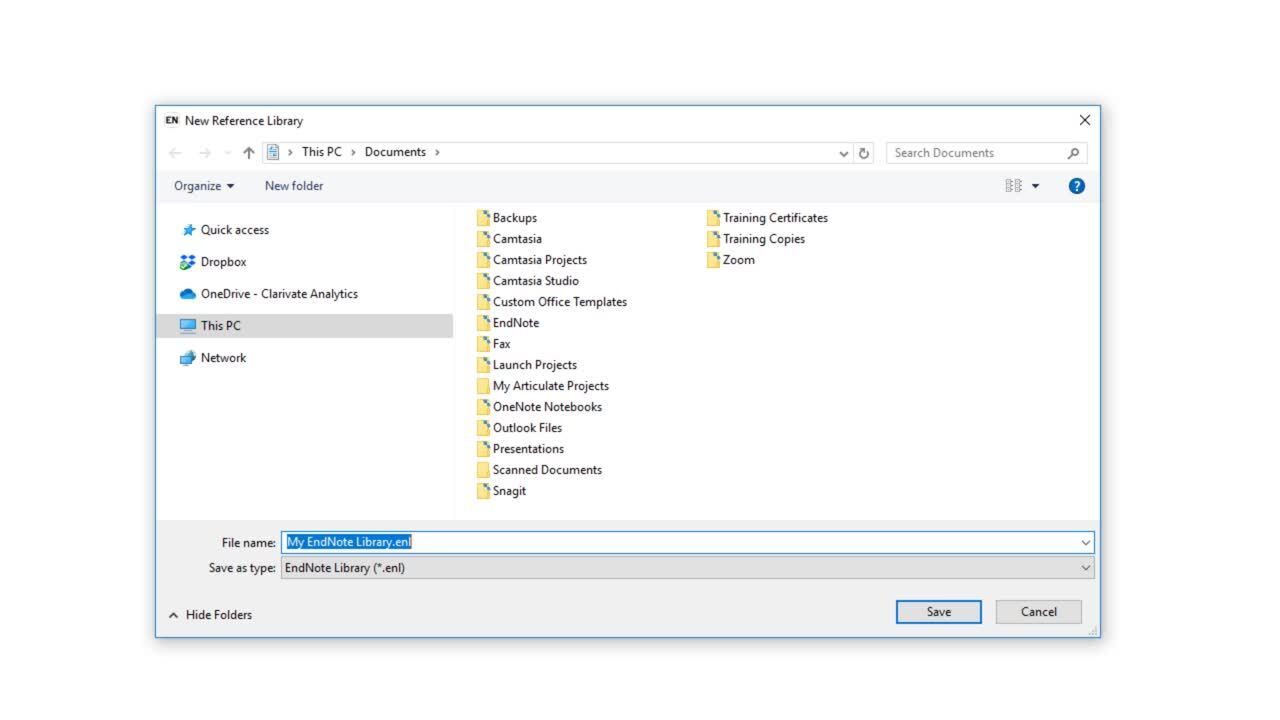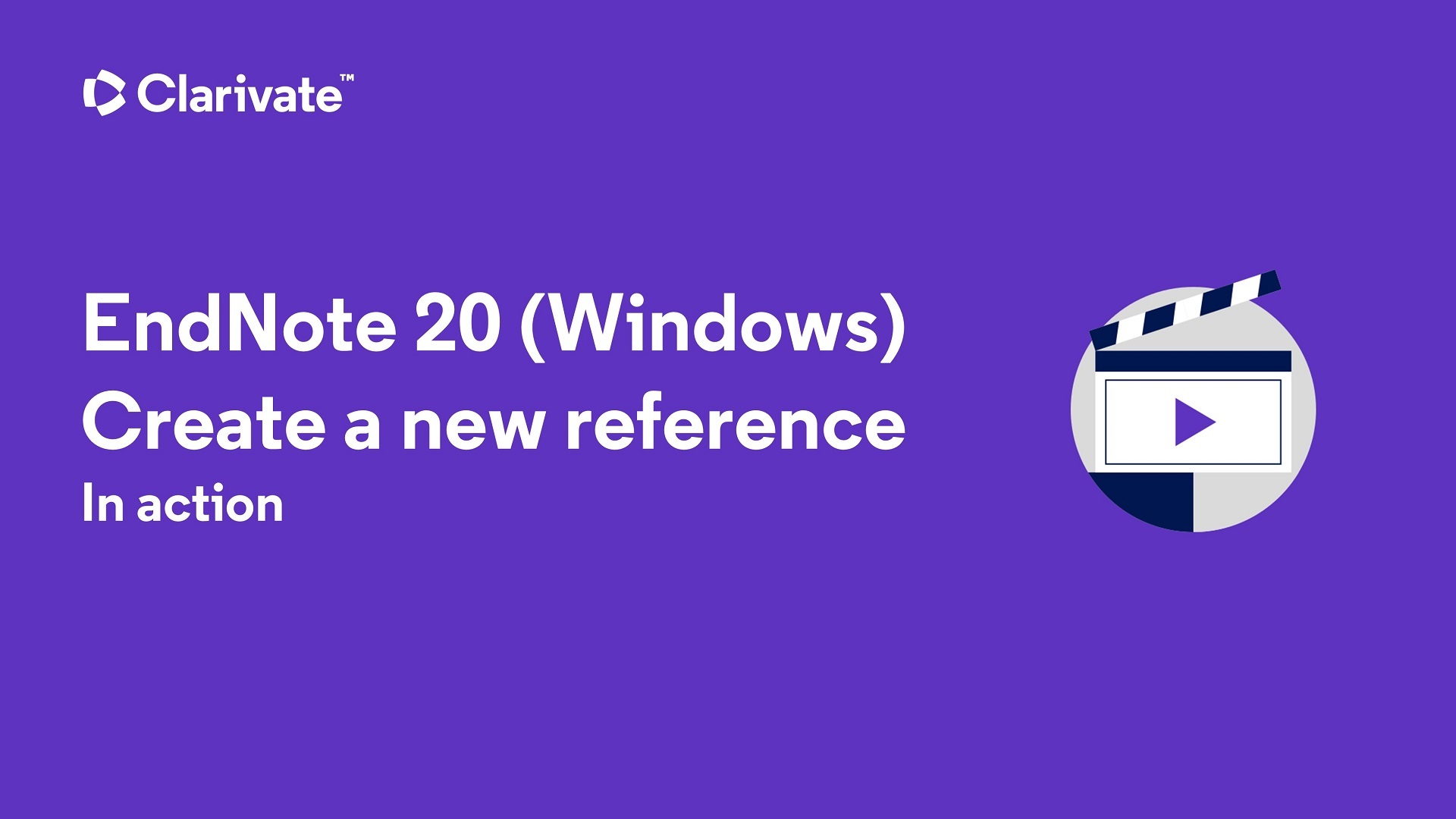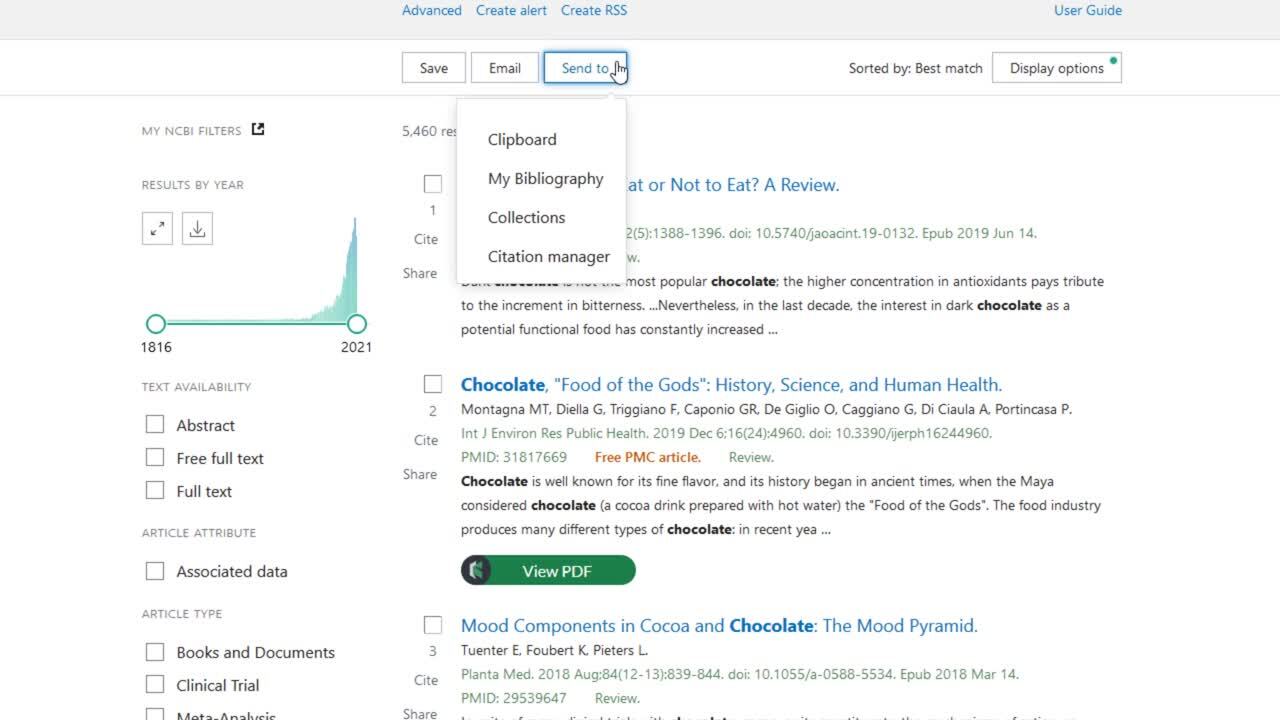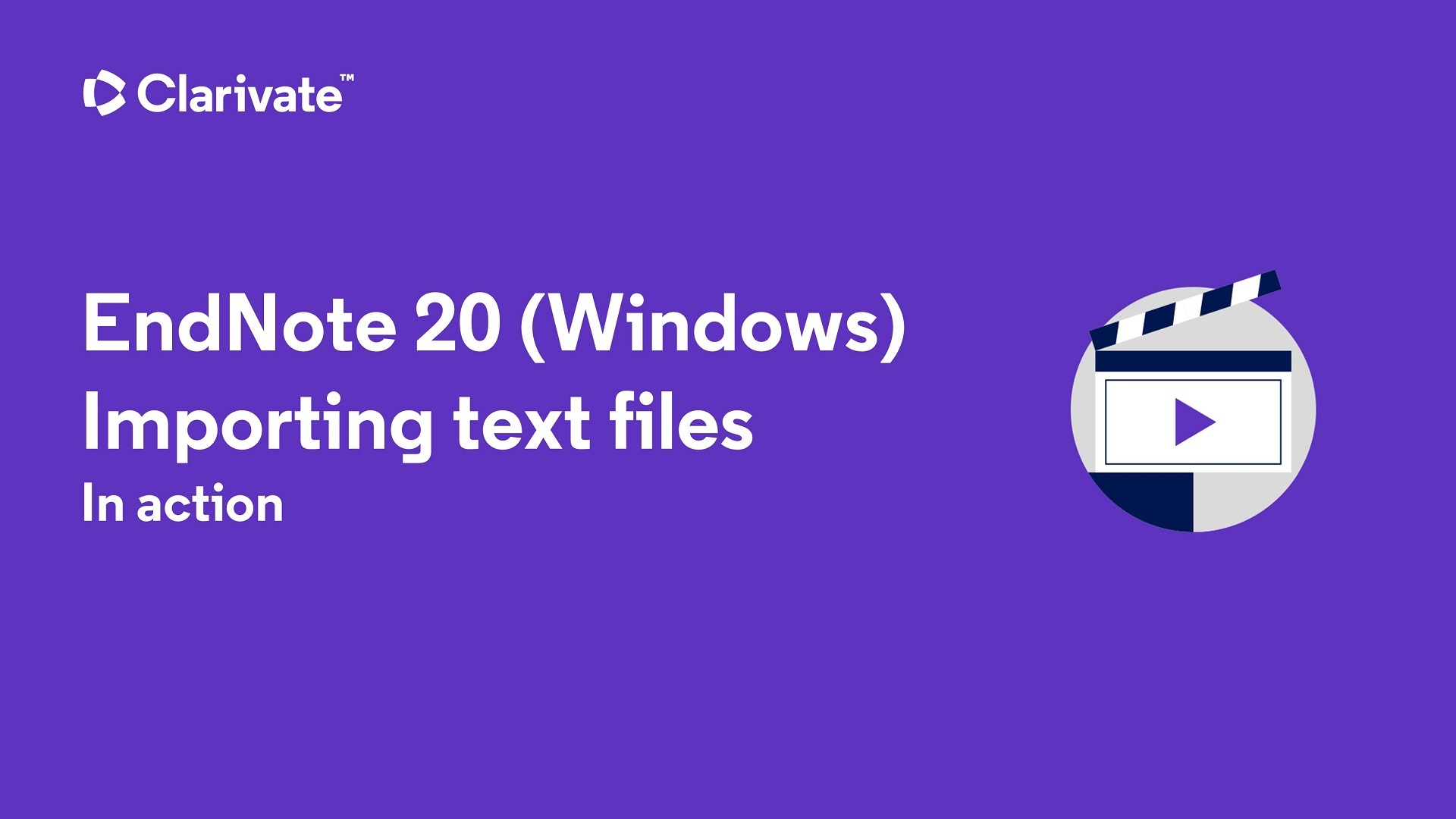

It is recommended that you have only one EndNote library where you store all your references. References can be organised into groups within the library instead of creating multiple libraries for different projects etc. You can learn more about organising your references in the Organising references tab.
The library must be saved on a local drive (e.g. Desktop/Documents/C Drive) in a non cloud syncing folder and not a networked drive such as Dropbox or Google Drive as active libraries can become corrupted over time on these drives and there may be performance issues.
It is recommended to regularly save a backup of your EndNote library. Compressed backup libraries can be saved on cloud drives or external hard drives.





Sometimes a database will create a text (.txt) file which will have to be imported into Endnote:

EndNote Click is a free browser plugin that allows you to send a reference and the corresponding PDF (if available) to EndNote. It connects with open access journals and also journals subscribed to by SETU.
The plugin is available on Chrome, Firefox, Microsoft Edge and Opera.
For more information on EndNote Click see the official EndNote guide link:
